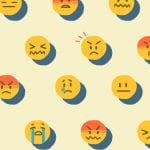Almost all cultures around the world have some element of mind-altering substances present, whether minor in effect (North America’s record coffee consumption) or major in effect (the psychedelic plants ingested for thousands of years by Native Americans). Alcohol, Heroin, and other depressants feature as widely as stimulants, such as Khat, or any one of caffeine’s various incarnations.
What effect have these substances had on the mental health of their parent cultures?
These are broad questions, with no one clear answer; but in general, the use of mind-altering substances, like other aspects of culture, is a double-edged sword. Used properly, they can lead to the development of greater understanding. Used improperly, they can easily lead to the death of both the mind and the spirit.
Important cultural awakenings have long been associated with the use of naturally occurring mind-altering substances, the most prominent in recent history being the Counter-Culture movement of the 1960s, being heavily associated with cannabis in San Francisco, and LSD being associated with the free-love movement around the same time.
Further afield, cultures such as the Mazatecs of Mexico used a psilocybin-containing mushroom in shamanic rituals to commune with the spirit world.
From the perspective of a shaman, these experiences can have powerful therapeutic and spiritual value, and it is undeniable that, if used in the right way, these substances can bring people to a higher level of awareness of themselves and the universe around them.
Along with this, there are mental health issues that result from the use of mind-altering substances, which range from side-effects such as mild paranoia to severe disorders such as depression. There is a strong correlation between the use of certain substances and mental health disorders, such as alcohol and depression, or cocaine and paranoia.
While it is generally accepted that such substances can be used to bring people to a higher level of awareness of themselves and the universe around them, there is also an argument (especially with regard to opiates) that they can be used to bring people to a lower level, forming unhealthy addictions, and indirectly, mental health issues.
While earlier in this article we referenced the high intake of coffee in North America, in fact, coffee consumption is even higher in Nordic / Scandinavian countries, such as Finland, Norway, Iceland, and Denmark. These countries are often associated with high levels of happiness, and being among the most stable and prosperous cultures in the world. Could it be that the heavy consumption of coffee has a role to play in this perception?
The consumption of alcohol is also very high in these countries. This is perhaps not surprising, as at least one significant factor in the development of mental health issues is often the consumption of alcohol.
What is perhaps surprising is that these countries boast some of the lowest rates of depression in the world. Could it be that the consumption of coffee and alcohol in these countries is not only an important cultural factor, but also plays a vital role in the perception of mental health?
On the other hand, in Asian countries with remarkably low drug use (such as Japan and China), rates of depression are also low.
As such, there are no easy conclusions that we can draw. Each culture’s unique makeup, economic factors, and social perceptions all combine to influence how mental health is perceived, and how mental health issues are treated, or otherwise.
Mental health is a complex issue, and it’s hard to draw a straight line between the use of mind-altering substances and the general perception of mental health. There is no need to label such substances as ‘bad’, and there is no reason to decide that all cultures should be expected to follow the same path. There are clear examples of specific and sincere rituals of one culture having gathered some level of acceptance within a larger surrounding cultural context. One such clear example is that of hookah (a middle-eastern cultural and social custom), taking up place within the context of a larger and less tobacco-friendly culture of say, London. Laws have even been passed to accommodate relatively high-taboo rituals, such as cannabis use by Rastafarians in the United States, even considering this is only a few short decades away from the declaration of the “war on drugs”. Without considering the effects on the mental health of either culture, we can say for certain that such cultural microcosms of ritual have had at least one effect: we can more clearly see the subjective arbitrariness of our rules, norms, and taboos. It’s truly enlightening.
There is a clear cultural difference in the perception of mental health, with rates of depression varying from culture to culture. In some cultures, the use of mind-altering substances is a major part of everyday life, and in others, their consumption is limited to special occasions.
The key to stable mental health, in the end, is the same as the key to stable physical health: moderation.






Comments by yang